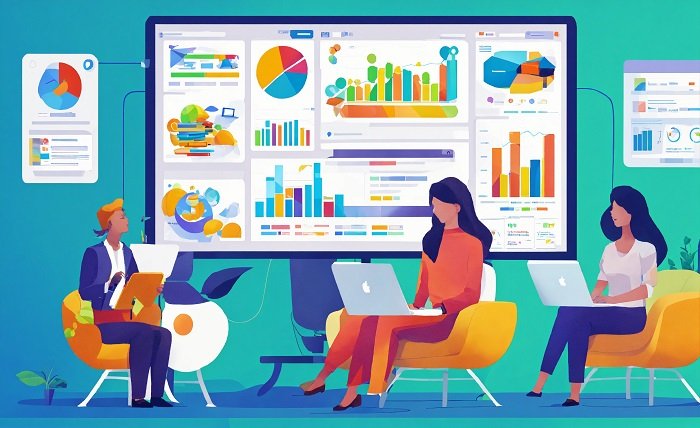Table of Contents
- Introduction
- Importance of User-Friendly Interfaces
- Comprehensive Features in Modern HR Platforms
- Top User-Friendly Payroll and HR Platforms
- Benefits of Integrated Systems
- Considerations When Choosing a Platform
- Conclusion
Managing payroll and HR need not be an overwhelming process, even for organizations with diverse needs and growing teams. The secret lies in adopting a platform that streamlines, makes essential tasks accessible and powerful, all without overwhelming users with complexity. The UI/UX of your chosen HR platform can set the tone for seamless daily operations, ensuring both ease of use and robust functionality. As user-friendly solutions become more prevalent, businesses are discovering just how critical intuitive design and comprehensive features are for compliance and productivity.
Finding this balance is fundamental, not just for HR professionals but for every stakeholder who needs clarity, speed, and accuracy from payroll and HR systems. Platforms that make tasks easy to complete help reduce errors, empower employees, and ultimately improve organizational satisfaction. Choosing the right tool involves understanding the key elements that drive usability and powerful features. This in-depth guide covers what to look for, the top platforms available, and how to select the best partner for your needs.
Importance of User-Friendly Interfaces
User-friendly interfaces shape the day-to-day reality for HR managers and employees alike. Platforms with clean layouts, intuitive navigation, and straightforward workflows can transform cumbersome tasks into stress-free, efficient processes. Dashboards that neatly display payroll schedules, pending approvals, and compliance notifications allow HR professionals to work smarter, not harder. A positive user experience means employees can quickly find their pay stubs or update personal details, reducing reliance on HR teams for every request.
Good interface design fosters accuracy in addition to saving time. Automated prompts and easy-to-follow steps lower the risk of error, help ensure every task is completed, and boost confidence among users. When employees can access essential payroll information or benefits details with minimal friction, overall engagement and satisfaction rise, leading to better retention and stronger workplace morale.
Comprehensive Features in Modern HR Platforms
A great platform combines appealing design with advanced tools. Modern payroll and HR systems are equipped with a range of features that support end-to-end workforce management:
- Automated Calculations: These platforms eliminate manual mistakes in complex payroll computations, from overtime pay to tax withholdings, by automating them.
- Employee Self-Service Portals: Self-service functions allow employees to access their information securely, manage benefits, and retrieve tax forms at their convenience.
- Customizable Configurations: Policy differences—from vacation accruals to variable pay cycles—mean platforms that can be tailored are essential for compliance and accuracy.
- Leave Management Integration: When PTO or sick leave data seamlessly updates payroll, businesses significantly reduce the risk of overpayments or untracked absences.
Modern HR technology also often includes modules for onboarding, performance reviews, and even learning management, all accessible via user-friendly apps or dashboards. These features enable efficient workflows and keep everyone on the same page, from new hires to management.
Top User-Friendly Payroll and HR Platforms
Specific payroll and HR solutions stand out by striking a balance between simplicity and robust functionality:
One leading platform lightens the administrative burden with a clean, intuitive interface and comprehensive automation features. It’s especially well-suited for small to mid-sized companies, from automated tax filings and direct deposits to benefits administration and seamless integration with accounting systems. An employee-facing dashboard allows team members to access pay history, documents, and benefits independently, reducing the need for HR intervention.
Another highly regarded platform combines payroll, benefits, device management, and IT setup into one unified dashboard. It simplifies onboarding and compliance, offers broad integration capabilities, and reduces time switching between multiple tools. With strong automation and a user-friendly design, it appeals to both rapidly growing startups and more established firms seeking operational efficiency.
Organizations favor a third solution, prioritizing ease of use without sacrificing HR depth. It streamlines everything from applicant tracking to time-off requests, while self-service tools empower employees to manage personal information, leave requests, and performance tracking. A responsive mobile app ensures users can stay connected and productive, no matter where work takes them.
Benefits of Integrated Systems
- Enhanced Efficiency: Integration eliminates redundancies, making data entry a one-time task and ensuring consistency throughout HR and payroll functions.
- Improved Compliance: Automatic updates and built-in checks keep pace with changing regulations and tax codes, reducing the risk of penalties or errors.
- Data Security: Centralized systems use advanced encryption, access controls, and continuous security monitoring to guard sensitive employee data.
- Employee Empowerment: Self-service features let employees handle personal tasks and access vital records, which cuts down on HR inquiries and boosts engagement.
With fully integrated systems, businesses save time and gain actionable insights from consolidated data, streamlining reporting, forecasting, and decision-making at every level.
Considerations When Choosing a Platform
- Business Size and Needs: A scalable solution that grows with your team and fits your unique workflows is crucial for long-term value.
- Integration Capabilities: Ensure the platform works well with your accounting, benefits, and existing HR tools, avoiding costly data silos or manual workarounds.
- Cost: Compare pricing models and hidden fees, weighing them against critical features to land on a platform that fits your budget.
- Customer Support: Strong support ensures issues are resolved quickly, with training and troubleshooting provided whenever needed.
Review customer testimonials and take advantage of free trials or demos—feedback from real users offers a valuable perspective on the day-to-day experience with a platform and its support team.
Conclusion
The correct payroll and HR platform streamlines complex business processes by combining a user-friendly design with a comprehensive suite of features. A system that is easy to navigate and offers the tools your business needs enables efficiency, reduces risk, and boosts in-house satisfaction. By evaluating options with an eye toward UI/UX, integration, scalability, and customer support, your company will be well-equipped to choose a solution that stands the test of time and scales alongside your business ambitions.
